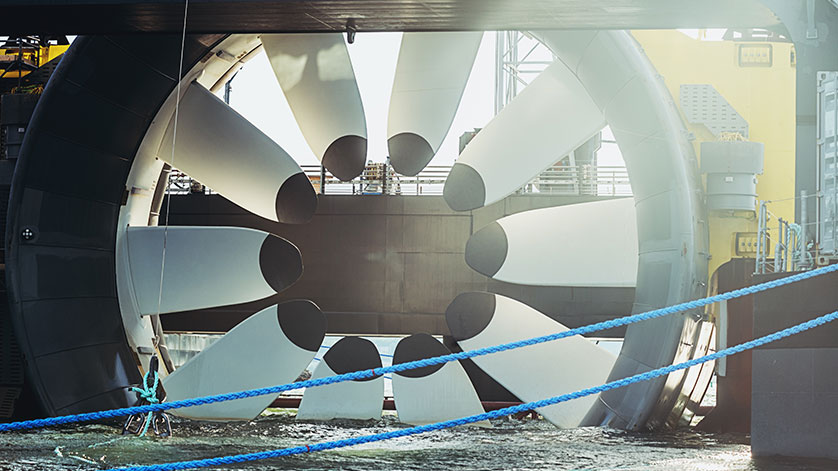New Report Analyzes Cutting-Edge Technologies in the Ocean Energy Sector

A new report from the European Commission’s Joint Research Centre analyzes ten future emerging technologies to generate energy from the ocean tides and waves. The report is the result of efforts from thirty experts in the ocean energy sector, who describe the state of advancement of each of the technology family, advantages, technological limitations, as well as their technology readiness level. The end of 2018 is the perfect time to look to the future:
Tidal energy
Tidal energy converters have reached the pre-commercial stage with the total installed capacity of around 12 MW in Europe. The speed of development is medium, with devices having reached maturity after 10+ years of R&D.
Floating tidal devices do not require heavy and costly foundation systems. Speed of the technology development is medium/fast (meaning between less than 5 to 15 years), with some floating tidal platforms already at an advanced stage of development.
Third generation tidal energy converters extract energy from a tidal flow or water flow using the sails, kites, or simulating fish-swimming motion. The speed of development is medium/fast, and is affected by the development of materials and ancillary technology.
Wave energy
Wave energy research goes back 40 years. The availability of testing facilities and new computational tools are making research more accessible and opening up new opportunities leading to novel approach to the first generation of wave energy concepts.
The advancement of artificial intelligence and learning algorithms offer an opportunity for developing designs which are more efficient. Development speed is in medium-slow range.
Novel wave energy concepts exploit the material-flexibility and the orbital velocities of water particles to convert wave power to electricity. They are characterized by an overall simplicity of design compared to first generation wave energy devices. Yet they are at early stages of development, with no device installed in real sea and the maximum power rating for the device yet to be identified.
Innovative tidal and wave energy power take off
This big group of different approaches on how to extract power from the ocean and convert it into electricity offers many possibilities for innovation and unlocking the potential of ocean energy in Europe.
Direct drive, hydraulic and inertia systems are more advanced.
Mechanical systems can be at a relatively fast pace, while dielectric elastomers offer fast speed of development but require more R&D. Further information on those concepts is available through Marinet 2 P Horizon 2020 project, the Wave Energy Scotland program and the European Marine Energy Centre list of wave and tidal energy technology.
Conclusions and recommendations for further work
An integrated systems approach is required to develop successful marine energy systems; therefore, collaboration with industry and engagement with original equipment manufacturers from the early stage of development is recommended.
System capabilities and requirements should be properly defined and made transparent to increase the effectiveness of future emerging technologies development and applicability to ocean energy technologies.
The transferability of solutions from other sector, as well as the development of new technologies and materials could impact significantly on the speed of development of future emerging technologies for ocean energy.
The impact of the future emerging technologies should be put in the context of the priorities for the ocean energy sector as identified through the Ocean Energy Roadmap and the SET-Plan Implementation Plan.
A further analysis is needed to prioritize which options could have the greatest impact on the sector in achieving short-term goals (2025 targets) and long-term ambitions (100 GW of installed capacity by 2050).
To download the full-report, click here.

